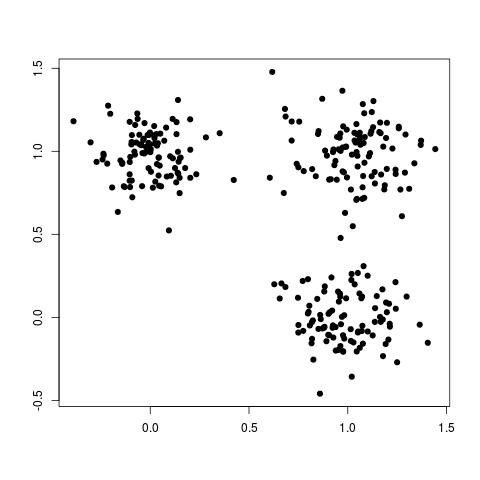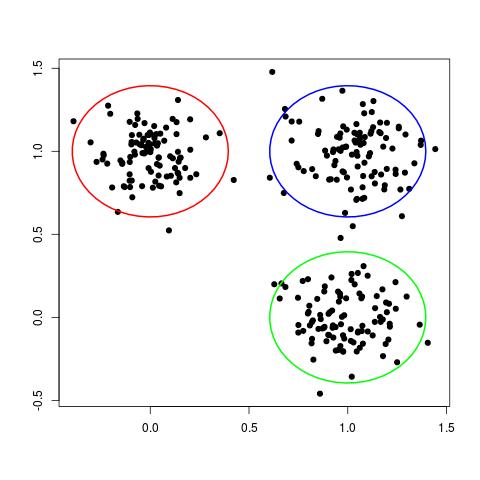| Line 24: | Line 24: | ||
Although this data set is not labelled, we can still clearly see three different groups, or clusters, of data points, as shown here: | Although this data set is not labelled, we can still clearly see three different groups, or clusters, of data points, as shown here: | ||
| + | |||
| + | <center>[[Image:runyan2.jpg|frame|none|alt=Alt text|<font size= 4> '''Figure 2''' </font size>]] </center> <br /> | ||
---- | ---- | ||
Revision as of 20:12, 5 May 2014
Introduction to Clustering
A slecture by CS student David RunyanIntroduction
In class, we covered the simple Bayesian classifier. This form of classification falls under a category known as supervised learning. What this means is that a set of labelled data data is used to to "train" the underlying model. However, it is not always possible to have such a data set, yet we may still wish to discover some form of underlying structure in an unlabelled data set. Such a task falls under the category of unsupervised learning.
Clustering is a form of unsupervised learning. "Clustering is the problem of identifying groups, or clusters of data points in multidimensional space". For example, consider the following data set:
Although this data set is not labelled, we can still clearly see three different groups, or clusters, of data points, as shown here:



